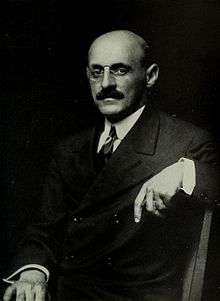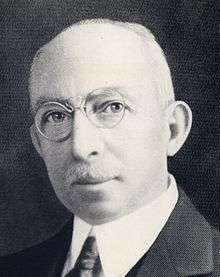Institute for Advanced Study
 | |
| Motto | Truth and Beauty |
|---|---|
| Type | Private |
| Established | 1930 |
| Founder | Abraham Flexner |
| Endowment | $741 million (2014) [1] |
| Director | Robbert Dijkgraaf |
| Location | Princeton, New Jersey, U.S. |
| Campus | Suburban |
| Website |
ias |
 | |
The Institute for Advanced Study (IAS) in Princeton, New Jersey, in the United States, is an independent, postdoctoral research center for theoretical research and intellectual inquiry founded in 1930 by American educator Abraham Flexner, together with philanthropists Louis Bamberger and Caroline Bamberger Fuld.
The IAS is perhaps best known as the academic home of Albert Einstein, Hermann Weyl, John von Neumann and Kurt Gödel, after their immigration to the United States. Although it is close to and collaborates with Princeton University, Rutgers University, and other nearby institutions, it is independent and does not charge tuition or fees.[2]
Flexner's guiding principle in founding the Institute was the pursuit of knowledge for its own sake.[3] The faculty have no classes to teach. There are no degree programs or experimental facilities at the Institute. Research is never contracted or directed. It is left to each individual researcher to pursue their own goals.[4][5] Established during the rise of European fascism, the IAS played a key role in the transfer of intellectual capital from Europe to America and soon acquired a reputation at the pinnacle of academic and scientific life—a reputation it has retained.[6][7][8]
It is supported entirely by endowments, grants, and gifts, and is one of the eight American mathematics institutes funded by the National Science Foundation.[9] It is the model for the other eight members of the consortium Some Institutes for Advanced Study.[8]
The institute consists of four schools—Historical Studies, Mathematics, Natural Sciences, and Social Sciences; there is also a program in theoretical biology.
History
Founding
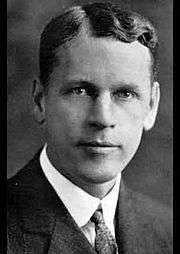
The Institute was founded in 1930 by Abraham Flexner, together with philanthropists Louis Bamberger and Caroline Bamberger Fuld.[10][11] Flexner was interested in education generally and as early as 1890 he had founded an experimental school which had no formal curriculum, exams, or grades. It was a great success at preparing students for prestigious colleges and this same philosophy would later guide him in the founding of the Institute for Advanced Study.[12] Flexner's study of medical schools, the 1910 Flexner Report, played a major role in the reform of medical education.[13] Flexner had studied European schools such as Heidelberg University, All Souls College, Oxford, and the Collège de France–and he wanted to establish a similar advanced research center in the United States.[14][15][16]
In his autobiography Abraham Flexner reports a phone call which he received in the fall of 1929 from representatives of the Bamberger siblings that led to their partnership and the eventual founding of the IAS:[17]
- I was working quietly one day when the telephone rang and I was asked to see two gentlemen who wished to discuss with me the possible uses to which a considerable sum of money might be placed. At our interview, I informed them that my competency was limited to the education field and that in this field it seemed to me that the time was ripe for the creation in America of an institute in the field of general scholarship and science, resembling the Rockefeller Institute in the field of medicine—developed by my brother Simon—not a graduate school, training men in the known and to some extent in methods of research, but an institute where everyone—faculty and members—took for granted what was known and published, and in their individual ways, endeavored to advance the frontiers of knowledge.
The Bamberger siblings wanted to use the proceeds from the sale of their department store in Newark, New Jersey, to found a dental school as an expression of gratitude to the state of New Jersey.[18] Flexner convinced them to put their money in the service of more abstract research.[19] (There was a brush with near-disaster when the Bambergers pulled their money out of the market just before the Crash of 1929.)[20][21] The eminent topologist Oswald Veblen[22] at Princeton University, who had long been trying to found a high-level research institute in mathematics, urged Flexner to locate the new institute near Princeton where it would be close to an existing center of learning and a world-class library.[23] In 1932 Veblen resigned from Princeton and became the first professor in the new Institute for Advanced Study. He selected most of the original faculty and also helped the Institute acquire land in Princeton for both the original facility and future expansion.[24][25]
Flexner and Veblen set out to recruit the best mathematicians and physicists they could find.[24] The rise of fascism and the associated anti-semitism forced many prominent mathematicians to flee Europe and some, such as Einstein and Hermann Weyl (whose wife was Jewish), found a home at the new institute.[26] Weyl as a condition of accepting insisted that the Institute also appoint the thirty-year-old Austrian-Hungarian polymath John von Neumann. Indeed, the IAS became the key lifeline for scholars fleeing Europe.[27] Einstein was Flexner's first coup and shortly after that he was followed by Veblen's brilliant student James Alexander and the wunderkind of logic Kurt Gödel.[28][29] Flexner was fortunate in the luminaries he directly recruited but also in the people that they brought along with them.[30] Thus, by 1934 the fledgeling institute was led by six of the most prominent mathematicians in the world. In 1935 quantum physics pioneer Wolfgang Pauli became a faculty member.[31] With the opening of the Institute for Advanced Study, Princeton replaced Göttingen as the leading center for mathematics in the twentieth century.[32][33]
Early years
For the 6 years from its opening in 1933, until Fuld Hall was finished and opened in 1939, the Institute was housed within Princeton University—in Fine Hall, which housed Princeton's mathematics department.[34] Princeton University's science departments are less than two miles away and informal ties and collaboration between the two institutions occurred from the beginning.[7] This helped start an incorrect impression that it was part of the University, one that has never been completely eradicated.[35]
From the beginning, the IAS had a policy of non-discrimination. On June 4, 1930, the Bambergers wrote as follows to the Institute's Trustees:[36]
- It is fundamental in our purpose, and our express desire, that in the appointments to the staff and faculty, as well as in the admission of workers and students, no account shall be taken, directly or indirectly, of race, religion, or sex. We feel strongly that the spirit characteristic of America at its noblest, above all the pursuit of higher learning, cannot admit of any conditions as to personnel other than those designed to promote the objects for which this institution is established, and particularly with no regard whatever to accidents of race, creed, or sex.
The IAS was a pioneer in women's equality in higher education at a time when even Princeton University did not accept women as graduate students.[37][38] In 1934 the celebrated mathematician Emmy Noether was invited by Flexner and Veblen to be a visiting member and to lecture at the Institute.[39]
Bamberger's policy did not prevent racial discrimination by Princeton. When African American mathematician William S. Claytor applied to the IAS in 1937, Princeton University said they "would not permit any coloured person to go to the Institute for Advanced Study." It was not until 1939, when the institute had moved into its own building, that Veblen was able to offer Claytor a position; but this time Claytor turned it down on principle.[40]
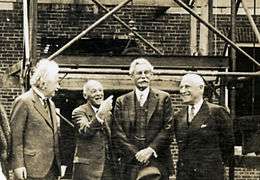
Flexner had successfully assembled a faculty of unrivaled prestige[41] in the School of Mathematics which officially opened in 1933. He sought to equal this success in the founding of schools of economics and humanities but this proved to be more difficult. The School of Humanistic Studies and the School of Economics and Politics were established in 1935. All three schools along with the office of the Director moved into the newly built Fuld Hall in 1939.[42] (Ultimately the schools of Humanistic Studies and Economics and Politics were merged into the present day School of Historical Studies established in 1949.)[43] In the beginning, the School of Mathematics included physicists as well as mathematicians. A separate School of Natural Sciences was not established until 1966.[44][45] The School of Social Science was founded in 1973.[46]
Mission
In a 1939 essay Flexner emphasized how James Clerk Maxwell, driven only by a desire to know, did abstruse calculations in the field of magnetism and electricity and that these investigations led in a direct line to the entire electrical development of modern times.[3] Citing Maxwell and other theoretical scientists such as Gauss, Faraday, Ehrlich and Einstein, Flexner said, "Throughout the whole history of science most of the really great discoveries which have ultimately proved to be beneficial to mankind have been made by men and women who were driven not by the desire to be useful but merely the desire to satisfy their curiosity."[47]

The IAS Bluebook says:
The Institute for Advanced Study is one of the few institutions in the world where the pursuit of knowledge for its own sake is the ultimate raison d'être. Speculative research, the kind that is fundamental to the advancement of human understanding of the world of nature and of humanity, is not a product that can be made to order. Rather, like artistic creativity, it benefits from a special environment.
This was the belief to which Abraham Flexner, the founding Director of the Institute, held passionately, and which continues to inspire the Institute today; Flexner wrote,[48]
Impact
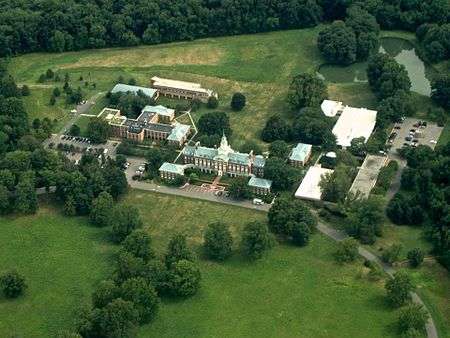
From the day it opened the IAS had a major impact on mathematics, physics, economic theory, and world affairs.[49] In mathematics forty-two out of sixty-one Fields Medalists have been affiliated with the Institute.[50] Thirty-three Nobel Laureates have been working at the IAS.[51] Of the sixteen Abel Prizes awarded since the establishment of that award in 2003, nine were garnered by Institute professors or visiting scholars.[52][53] Of the fifty-six Cole Prizes awarded since the establishment of that award in 1928, thirty-nine have gone to scholars associated with the IAS at some point in their career.[54] IAS people have won 20 Wolf Prizes in mathematics and physics.[55] Its more than 6,000 former members hold positions of intellectual and scientific leadership throughout the academic world.[56]
Pioneering work on the theory of the stored-program computer as laid down by Alan Turing was done at the IAS by John von Neumann, and the IAS machine built in the basement of the Fuld Hall from 1942 to 1951 under von Neumann's direction introduced the basic architecture of all modern digital computers.[32][57][58] The IAS is the leading center of research in string theory and its generalization M-theory introduced by Edward Witten at the IAS in 1995.[59] The Langlands program, a far-reaching approach which unites parts of geometry, mathematical analysis, and number theory was introduced by Robert Langlands, the mathematician who now occupies Albert Einstein's old office at the institute.[60][61] Langlands was inspired by the work of Hermann Weyl, André Weil, and Harish-Chandra, all scholars with wide-ranging ties to the Institute, and the IAS maintains the key repository for the papers of Langlands and the Langlands program.[62] The IAS is a main center of research for homotopy type theory, a modern approach to the foundations of mathematics which is not based on classical set theory. A special year organized by Institute professor Vladimir Voevodsky and others resulted in a benchmark book in the subject which was published by the Institute in 2013.[63][64]
The Institute is or has been the academic home of many of the best minds of their generation.[65] Among them are Michael Atiyah, Enrico Bombieri, Shiing-Shen Chern, Pierre Deligne, Freeman J. Dyson, Albert Einstein, Clifford Geertz, Kurt Gödel, Albert Hirschman, George F. Kennan, Tsung-Dao Lee, J. Robert Oppenheimer, Erwin Panofsky, Atle Selberg, John von Neumann, André Weil, Hermann Weyl, Frank Wilczek, Edward Witten, Chen-Ning Yang and Shing-Tung Yau.
Special Year Programs
Flexner's vision of the kind of results that can emerge in an institution devoted to the pursuit of knowledge for its own sake is illustrated by the "Special Year" programs sponsored by the IAS School of Mathematics.[66] For example, in 2012–13 researchers at the IAS school of mathematics held A Special Year on Univalent Foundations of Mathematics.[67] Intuitionistic type theory was created by the Swedish logician Per Martin-Löf's in 1972 to serve as an alternative to set theory as a foundation for mathematics. The special year brought together researchers in topology, computer science, category theory, and mathematical logic with the goal of formalizing and extending this theory of foundations. The program was organized by Steve Awodey, Thierry Coquand and Vladimir Voevodsky, and resulted in a book being published in Homotopy type theory.[64] The authors—more than 30 researchers ultimately contributed to the project—noted the essential contribution of the IAS saying,
Special thanks are due to the Institute for Advanced Study, without which this book would obviously never have come to be. It proved to be an ideal setting for the creation of this new branch of mathematics: stimulating, congenial, and supportive. May some trace of this unique atmosphere linger in the pages of this book, and in the future development of this new field of study.[64]
— The Univalent Foundations Program, Institute for Advanced Study Princeton, April 2013
One of the researchers, Andrej Bauer said,
We are a group of two dozen mathematicians who wrote a 600 page book in less than half a year. This is quite amazing, since mathematicians do not normally work together in large groups. But more importantly, the spirit of collaboration that pervaded our group at the Institute for Advanced Study was truly amazing. We did not fragment. We talked, shared ideas, explained things to each other, and completely forgot who did what.[68]
— Andrej Bauer, Mathematics and Computation, June 20, 2013
The book, informally known as The HoTT book, is freely available online.[69]
Criticism
The Institute's founding premise, that individuals with lifetime tenure and no assigned duties will produce the most outstanding scholarship, is not universally shared. One critic was Richard Feynman, who argued that the IAS doesn't offer real activity or challenge:
When I was at Princeton in the 1940s I could see what happened to those great minds at the Institute for Advanced Study, who had been specially selected for their tremendous brains and were now given this opportunity to sit in this lovely house by the woods there, with no classes to teach, with no obligations whatsoever. These poor bastards could now sit and think clearly all by themselves, OK? So they don't get any ideas for a while: They have every opportunity to do something, and they're not getting any ideas. I believe that in a situation like this a kind of guilt or depression worms inside of you, and you begin to worry about not getting any ideas. And nothing happens. Still no ideas come. Nothing happens because there's not enough real activity and challenge: You're not in contact with the experimental guys. You don't have to think how to answer questions from the students. Nothing!
— Richard Feynman, Surely You're Joking, Mr. Feynman!, 1985
Other Institutes for Advanced Study
The IAS in Princeton is widely recognized as the world's first Institute for Advanced Study.[6] It was a hard act to follow and it would be years before any similar institutions were founded. The Center for Advanced Study in the Behavioral Sciences at Stanford was the first such spinoff in 1954. This was followed by the National Humanities Center founded in North Carolina in 1978.[70] These two institutions eventually became the core of a consortium known as Some Institutes for Advanced Study (SIAS). The SIAS includes the original institute in Princeton and eight other institutes founded explicitly to emulate the model of the original IAS. These nine Institutes for Advanced Study are:[8][71]
- Center for Advanced Study in the Behavioral Sciences in Stanford, California
- National Humanities Center in North Carolina
- Radcliffe Institute for Advanced Study in Cambridge, Massachusetts
- Netherlands Institute for Advanced Study in Amsterdam, the Netherlands (until 2016 in Wassenaar )
- Swedish Collegium for Advanced Study in Uppsala, Sweden
- Berlin Institute for Advanced Study in Berlin, Germany
- Israel Institute for Advanced Studies in Jerusalem, Israel
- Nantes Institute for Advanced Study Foundation in Nantes, France
- Institute for Advanced Study in Princeton, New Jersey
In recent years there have been other institutes loosely based on the Princeton original, in some cases established with help from IAS professors. In 1997 IAS professor Chen-Ning Yang helped the Chinese set up the Institute for Advanced Study at Tsinghua University in Beijing.[72] The Freiburg Institute for Advanced Studies in Freiburg, Germany was founded in 2007, with IAS director at the time Peter Goddard giving the inaugural address.[16] Princeton IAS professors André Weil and Armand Borel helped to establish close contacts with the Ramanujan Institute for Advanced Study in Mathematics, founded in 1967 as part of the University of Madras in India.[73]
The prestigious Institut des Hautes Études Scientifiques (IHÉS) founded in 1958 just south of Paris is universally acknowledged to be the French counterpart of the IAS in Princeton.[74][75] Princeton Institute director Robert Oppenheimer had a close relationship with IHÉS founder Léon Motchane and played a major role in helping to get it established.[76]
Neither the Princeton IAS nor SIAS is connected with, and should not be confused with, the Consortium of Institutes of Advanced Studies which comprises some twenty research institutes located throughout Great Britain and Ireland.[77] The name Institute for Advanced Study, along with the acronym IAS, is also used by various other independent institutions throughout the world, some having little to do with the Princeton model.[78] See Institute for Advanced Study (disambiguation) for a complete list.
Directors, faculty and members
At any given time, the IAS has a Faculty consisting of twenty-eight eminent academics who are appointed for life. Although the faculty do not teach classes (because there are no classes), they often do give lectures at their own initiative and have the title Professor along with the prestige associated with that title. Furthermore, they direct research and serve as the nucleus of a larger and generally younger group of scholars, whom they have the power to select and invite.[79] Each year fellowships are awarded to about 190 visiting members from over 100 universities and research institutions who come to the Institute for periods from one term to a few years. Individuals must apply to become Members at the Institute, and each of the Schools has its own application procedures and deadlines.[80]
| Directors of the IAS | |
|---|---|
| Name | Term |
| Abraham Flexner | 1930–1939 |
| Frank Aydelotte | 1939–1947 |
| J. Robert Oppenheimer | 1947–1966 |
| Carl Kaysen | 1966–1976 |
| Harry Woolf | 1976–1987 |
| Marvin Leonard Goldberger | 1987–1991 |
| Phillip Griffiths | 1991–2003 |
| Peter Goddard | 2004–2012 |
| Robbert Dijkgraaf | 2012–present[81] |
See also
- List of Nobel laureates affiliated with the Institute for Advanced Study
- List of Fields medalists affiliated with the Institute for Advanced Study
- List of Cole Prize winners affiliated with the Institute for Advanced Study
- List of Wolf Prize winners affiliated with the Institute for Advanced Study
- List of Brouwer medalists affiliated with the Institute for Advanced Study
- Some Institutes for Advanced Study
References
- ↑ Institute for Advanced Study (2014)
- ↑ Institute for Advanced Study: Frequently Asked Questions What is the relationship between the Institute and Princeton University?
- 1 2 Jogalekar.
- ↑ Nevins pp. 45-46.
- ↑ Institute For Advanced Study Frees Scholar From Class, Tests, Students The Harvard Crimson, November 7, 1953
- 1 2 Reisz.
- 1 2 Leitch (1978).
- 1 2 3 Wittrock (1910).
- ↑ Arntzenius, Introduction p. iii.
- ↑ Flexner (1910).
- ↑ Bonner, p. 237.
- ↑ Abraham Flexner: his life and legacy by M. Saleem Seyal, MD, Hektoen International Journal: A Journal of Medical Humanities, Summer 2013
- ↑ Gunderman.
- ↑ Review of Iconoclast: Abraham Flexner and a Life in Learning in Times Higher Education, December 19, 2003: "his inspiration was All Souls College in Oxford"
- ↑ Flexner (1930), pp. 362-363.
- 1 2 University of Freiberg: Opening ceremonial of the Freiburg Institute for Advanced Studies, in German
- ↑ Flexner (1960), p. 232.
- ↑ Nasar, pp. 51-55.
- ↑ Axtell (2007).
- ↑ Nasar, p. 55.
- ↑ Villani p. 62-63.
- ↑ Feuer, p. 98.
- ↑ Bonner, pp. 247-248.
- 1 2 Leitch (1995).
- ↑ Documents located at Princeton University in the Seeley G. Mudd Manuscript Library: The Princeton Mathematics Community in the 1930s, "Veblen was instrumental both in envisioning the Institute before the circumstances led to its creation as well as... the initial selection of members for the Institute."
- ↑ Villani p. 63. "After several years of patient negotiation the Bambergers succeeded in luring away the very best, one after another. Einstein came in 1933. Then Godel. Weyl. Von Neumann. And many more… As the political climate in Europe became increasingly unbearable for Jewish scientists and their friends, the world's scientific center of gravity shifted from Germany to the United States."
- ↑ Arntzenius, p. 8.
- ↑ Nasar, p. 54.
- ↑ Grattan-Guinness, p. 1518-19.
- ↑ Nasar, p. 53.
- ↑ Batterson.
- 1 2 Edwards.
- ↑ Review of "Alan Turing: The Enigma" By James Case, Society for Industrial and Applied Mathematics, March 2, 2015.
- ↑ Axtell, p. 95.
- ↑ Regis, p. 26.
- ↑ Pais p. 64.
- ↑ Case, Bettye Anne and Leggett, Anne M. (2005) Complexities: Women in Mathematics, Princeton University Press ISBN 0691114625 p. 81, "Princeton did not start admitting women to their graduate program in mathematics until the fall of 1968."
- ↑ Jewish Currents: Emmy Noether, Mathematical Genius Posted: April 13, 2012: Noether moved to the U.S. in 1933 and taught at Bryn Mawr; in 1934, she began lecturing at the Institute for Advanced Study in Princeton, but spoke of Princeton as a "men's university, where nothing female is admitted."
- ↑ Turnbull WWW Server. School of Mathematical and Computational Sciences University of St Andrews: Emmy Amalie Noether
- ↑ William Waldron Schieffelin Claytor at the MacTutor History of Mathematics archive
- ↑ Bonner, From the first, an invitation to come to the institute was viewed as a mark of prestige. p. 256
- ↑ Institute for Advanced Study (1940), p. 3
- ↑ Institute for Advanced Study (2010), p. 2
- ↑ Institute for Advanced Study (2013): IAS Bluebook, p. 16
- ↑ Batterson p. 142.
- ↑ Institute for Advanced Study (2014), p. 42
- ↑ Flexner (1939).
- ↑ Institute for Advanced Study (2013): IAS Bluebook.
- ↑ Big Ideas: Big Thinkers: The faculty of the Institute for Advanced Study are changing the way we look at the world. Thirteen/WNET
- ↑ Fields Medal Winners Affiliated with the Institute for Advanced Study as of August 2014
- ↑ Nobel Prize Winners Affiliated with the Institute for Advanced Study as of February 2012
- ↑ IAS pages for All Scholars
- ↑ The Abel Prize Laureates
- ↑ Wolfram Mathworld: Cole Prize winners
- ↑ "Wolf Foundation General Information". Wolf Foundation.
- ↑ PBS Series: Big Ideas
- ↑ Dyson, pp. 82-86, 274.
- ↑ Smithsonian: The National Museum of American History: IAS Computer
- ↑ In Fake Universes, Evidence for String Theory by Natalie Wolchover, Quanta Magazine, February 18, 2015
- ↑ Institute for Advanced Study (2010)
- ↑ Frenkel, p. 4.
- ↑ Institute for Advanced Study: The Work of Robert Langlands collected as an archive in uniform TeX format
- ↑ IAS school of mathematics: Special Year on The Univalent Foundations of Mathematics
- 1 2 3 Homotopy Type Theory: Univalent Foundations of Mathematics
- ↑ A day at Genius Camp: getting dumb in Einstein's paradise, By Katie Drummond, The Verge, October 4, 2013
- ↑ Institute for Advanced Study: Special Year Programs
- ↑ "Univalent Foundations of Mathematics". Retrieved 19 July 2015.
- ↑ "The HoTT book (finished)". Retrieved 19 July 2015.
- ↑ "The HoTT Book (obtaining)". Homotopy Type Theory. 12 March 2013.
- ↑ Reisz. "The Princeton IAS proved a hard act to follow. It was not until 1954 that a similar institute was founded."
- ↑ Hebrew U. Institute for Advanced Studies accepted into international ‘Ivy League’ of advanced institutes press release by The Hebrew University of Jerusalem, July 15, 2007
- ↑ Tsinghua University Institute for Advanced Study: Founding
- ↑ Ramanujan Institute For Advanced Study In Mathematics
- ↑ Alexander Grothendieck Obituary Le Monde, November 11, 2014
- ↑ "On the occasion of receiving the Seki Takakazu Prize" (PDF). Mathematical Society of Japan.
- ↑ Oppenheimer and IHÉS (1958-1967), Institut des Hautes Études Scientifiques
- ↑ Consortium of Institutes of Advanced Studies School of Advanced Study: University of London
- ↑ Times Higher Education: Local but not global April 3, 2008
- ↑ "A Community of Scholars". Retrieved 19 July 2015.
- ↑ Institute for Advanced Study (2015): Mission and History
- ↑ Robbert Dijkgraaf Appointed Director of Institute for Advanced Study Akademie van Wetenschappen, 14 November 2011
Bibliography
- Arntzenius, Linda G (2011). Institute for Advanced Study, pub by Arcadia, Charleston, SC. ISBN 0738574090
- Axtell, James (2007). The Making of Princeton University : From Woodrow Wilson to the Present, Princeton University Press. ISBN 0691126860
- Batterson, Steve (2006). Pursuit of Genius : Flexner, Einstein, and the Early Faculty at the Institute for Advanced Study, A. K. Peters, Ltd., Wellesley, MA. ISBN 1568812590
- Bonner, Thomas Neville (2002). Iconoclast: Abraham Flexner and a Life in Learning, Johns Hopkins University Press. ISBN 0801871247
- Dyson, George (2012). Turing's Cathedral: The Origins of the Digital Universe, Pantheon Books, New York. ISBN 0375422773
- Edwards, Jon R. (2012). A History of Early Computing at Princeton, Princeton Turing Centennial Celebration, Princeton University, May 10–12, 2012
- Feuer, Lewis Samuel (1974). Einstein and the Generations of Science, Basic Books. ISBN 0465018718
- Flexner, Abraham (1910). Medical Education in the United States and Canada: A Report to the Carnegie Foundation for the Advancement of Teaching, Merrymount Press. OCLC 9795002
- Flexner, Abraham (1930). Universities : American, English, German, Oxford Univ. Press, New York, OCLC 238820218
- Flexner, Abraham (1939). The Usefulness of Useless Knowledge, Harpers Magazine, Issue 179, June/November 1939
- Flexner, Abraham (1960). Abraham Flexner : An Autobiography, Simon and Schuster, New York. OCLC 14616573
- Freiberger, Marianne (2011). Review of Pursuit of Genius: Flexner, Einstein, and the Early Faculty at the Institute for Advanced Study, The Mathematical Intelligencer
- Frenkel, Edward (2015). Love and Math: The Heart of Hidden Reality, Basic Books, New York, ISBN 0465050743
- Grattan-Guinness, Ivor (2003). Companion Encyclopedia of the History and Philosophy of the Mathematical Sciences, volume 2, The Johns Hopkins University Press. ISBN 0801873975
- Gunderman, Richard B.; Gascoine, Kelly; Hafferty, Frederic W.; Kanter, Steven L. (2010). A "paradise for scholars": Flexner and the Institute for Advanced Study, Academic Medicine : Journal of the Association of American Medical Colleges, November 2010; 85(11): 1784-9
- Institute for Advanced Study (1940). Bulletin No. 9 : History And Organization.
- Institute for Advanced Study (2010). "Modern Mathematics and the Langlands Program".
- Institute for Advanced Study (2013). "IAS Bluebook" (PDF).
- Institute for Advanced Study (2014). "Report for the Academic Year 2013–2014" (PDF).
- Institute for Advanced Study (2015). "Mission and History".
- Jogalekar, Ashutoshon (2013). Ich probiere: Revisiting Abraham Flexners dream of the useful pursuit of useless knowledge, Scientific American, December 12, 2013
- Leitch, Alexander (1978). The Institute for Advanced Study, in A Princeton Companion, Princeton University Press
- Leitch, Alexander (1995). Oswald Veblen, in A Princeton Companion, Princeton University Press
- Nasar, Sylvia (1998). A beautiful mind : a biography of John Forbes Nash, Jr., Simon & Schuster, New York, ISBN 0684819066
- Nevins, Michael (2010). Abraham Flexner: A Flawed American Icon, iUniverse Inc., ISBN 1450260861
- Pais, Abraham & Crease, Robert P. J. Robert Oppenheimer: A Life, Oxford University Press, New York. ISBN 0195347226
- Pasachoff, Naomi (1992). Science's 'Intellectual Hotel' : The Institute for Advanced Study, Encyclopædia Britannica Yearbook of Science and the Future. ISBN 0852295499
- Regis, Ed (1987). Who Got Einstein's Office: Eccentricity and Genius at the Institute for Advanced Study, Addison-Wesley, Reading. ISBN 0201120658
- Reisz, Matthew (2008). The perfect brainstorm, Times Higher Education, March 20, 2008
- Scott, Joan Wallach & Keates, Debra, eds (2001). Schools of Thought : Twenty-five Years of Interpretive Social Science, Princeton University Press. A collection of reflective pieces by former fellows at the Institute for Advanced Study School for Social Science. ISBN 0691088411
- Villani, Cédric (2015). Birth of a Theorem : A Mathematical Adventure, Faber and Faber. ISBN 0865477671
- Wittrock, Björn (1910). A brief history of institutes for advanced study
External links
| Wikiquote has quotations related to: Institute for Advanced Study |
| Wikimedia Commons has media related to Institute for Advanced Study. |
- Official website
- "Institute for Advanced Study", a historical overview of the Institute published on the occasion of the 75th anniversary of the founding
Coordinates: 40°19′54″N 74°40′04″W / 40.33167°N 74.66778°W
